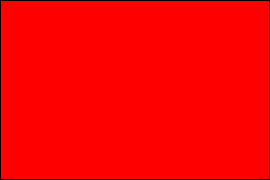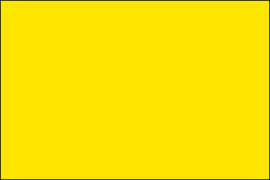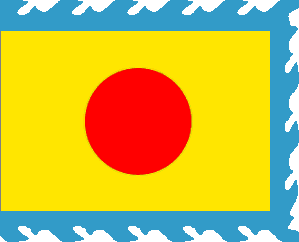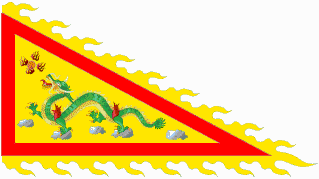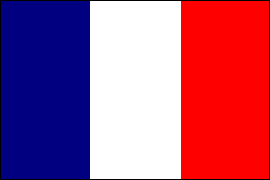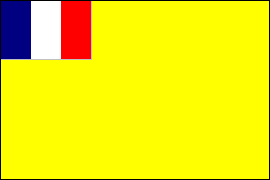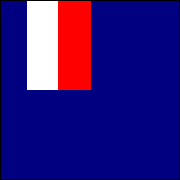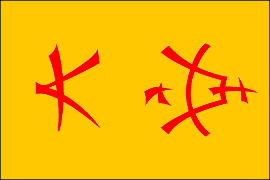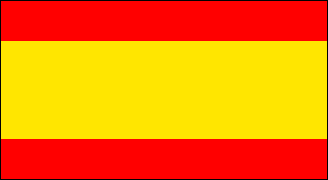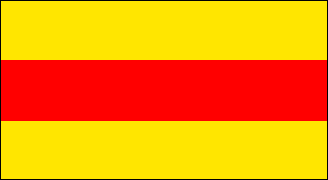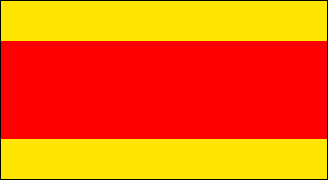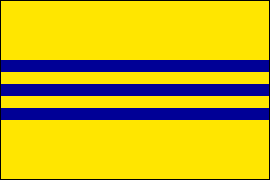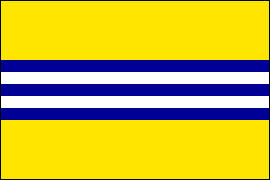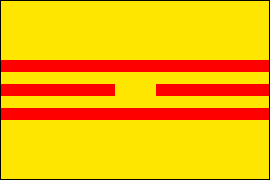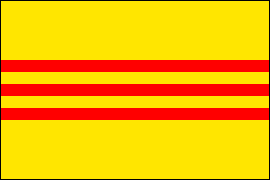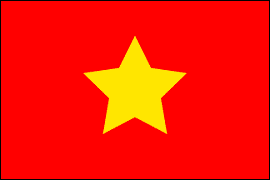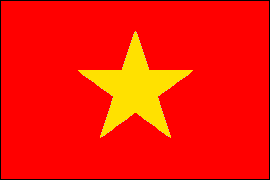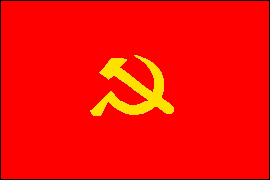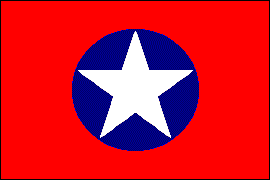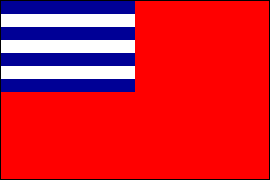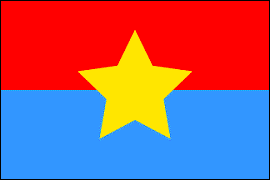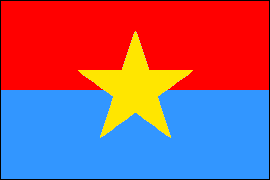THE NATIONAL FLAGS OF VIETNAM
EIGHTEENTH CENTURY TO THE PRESENT DAY
The country now known as Vietnam took shape gradually between the fifteenth and early nineteenth centuries as the power of successive ruling dynasties spread south from the region called Tonkin. By the 1820s most of the country was under the control of the emperors of the Nguyen dynasty. But no sooner was this political unification achieved than it was undermined by the forces of Western imperialism, spearheaded by France.
French expansion in Indochina began in the 1850s and by 1893 all of present-day Vietnam, Cambodia and Laos constituted a French colony under the name of the Indochinese Union. Vietnam itself was divided into three protectorates: Tonkin in the north, Anaam in the center and Cochinchina in the south. Vietnam's nominal head of state was the reigning emperor of the Nguyen dynasty but in fact he was a mere figurehead, real power being vested in the French Governor-General of Indochina and his administration. In late 1940 Japan occupied Indochina, though leaving the Vichy French administration in place. But in May 1945 the Japanese deposed the French authorities and proclaimed an Empire of Vietnam under Japan's protection, an arrangement that came to a swift end with the latter's surrender in August. The Emperor Bao Dai abdicated, transferring power to the Viet Minh (Vietnamese Communists) under Ho Chi Minh, who proclaimed a Democratic Republic of Vietnam. But the French were unwilling to give up their Indochinese colony and upon their return to power in southern Vietnam they proclaimed an Autonomous Republic of Cochinchina. France's long-range plan was to unite all of Vietnam as an autonomous state within the French Union (colonial empire) and to that end they persuaded Bao Dai to return as Head of State. This being accomplished, the State of Vietnam was formally established in 1949. The immediate sequel was the outbreak of war between France and the Viet Minh: a bloody conflict that raged until 1954.
From the beginning the Vietnamese were ill content with French rule and in the first half of the twentieth century various political parties appeared, whose proclaimed aim was to secure the country's independence. The most important of these were the Communist Party and the Nationalist Party of Greater Vietnam (Vietnam Nationalist Party after 1945).
France's defeat at the hands of the Viet Minh ended colonial rule in Indochina, but Vietnam did not achieve independence as a single country. In the north the Communists under Ho Chi Minh established themselves in power, while in the south a non-communist nationalist regime took shape. The Geneva Conference of 1954 failed to resolve the differences between the two regimes and the country's partition was formalized. In the north was the Democratic Republic of Vietnam (the DRV or North Vietnam); in the south was the Republic of Vietnam (the RVN or South Vietnam). Both regimes claimed sovereignty over the whole of the country, and the DRV sought to make good its claim by organizing an insurgency in the RVN. Communist China lent its support to this enterprise, and in the Cold War atmosphere of the time it was inevitable that the Western powers would come to the support of the non-communist side. The United States had been unwilling to intervene on behalf of the French colonial regime but was willing to support independent South Vietnam. As the Communist insurgency burgeoned the US was slowly but surely drawn into the conflict, which became a proxy war between the superpowers. Though eventually the insurgent forces embodied in the National Liberation Front were crushed by the US and the RVN, North Vietnam's direct military intervention prolonged the war, exhausting the US will to persevere and fatally undermining the RVN. The US withdrew from the war in 1973 and in 1975 a full-scale North Vietnamese invasion culminated in the collapse of South Vietnam and the long-postponed unification of the country, which was styled the Socialist Republic of Vietnam.
